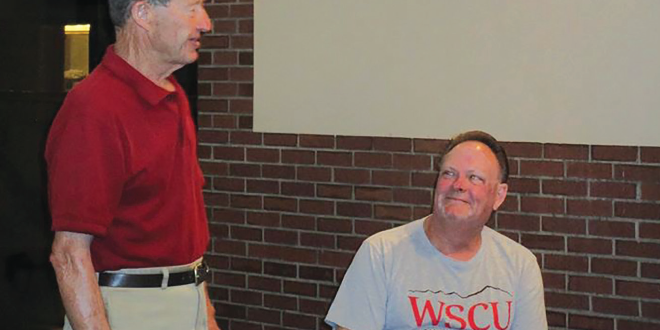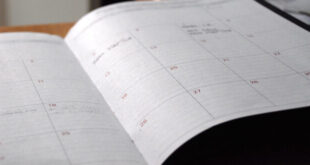A former student pays tribute
By Mark D. Walker
(Editor’s Note: Western Colorado University’s Dr. Duane Vandenbusche will take the reins as Colorado state historian this Saturday, August 1.)
I’m one of more than 2,200 students who have been taught or coached by Dr. Duane Vandenbusche at Western Colorado University over the last 58 years. He will be the first state historian representing the Western Slope in the 96-year history of the position, and when I learned he would be Colorado’s official state historian on August 1, I thought it a good time to reread my favorite of his 11 publications, The Gunnison Country, review it and publish the review on August 1 in his honor.
Duane’s discipline and high standards were instrumental in preparing me for the challenges of the Peace Corps in Guatemala. As I describe in my book, Different Latitudes: My Life in the Peace Corps and Beyond, Duane was notorious for his quizzes and detailed tests, which covered a myriad of facts about life in the mining camps. He’d show up each day wearing a short-sleeved white shirt and tie with slacks, and he would demand excellence. Once I’d aced a few of his courses, I was confident I could do anything!
As I began reading The Gunnison Country, I remembered why it stood out. At the end of the book under “Acknowledgements,” the author revealed that this labor of love took him 10 years to complete. The work is beautifully laid out, with historic drawings in the front and back insets and a virtual archive of photographs throughout, as well as several detailed maps. The first edition was printed in 1980, and the latest (sixth) edition is available through B&B Printers in Gunnison.
As I read through the 21 chapters that describe the history of the region, many memories of the area flooded back, including the chapter on the mining camp of Gothic. I spent many hours in the library at the Colorado Historical Society in Denver, studying the microfilm issues of the Elk Mountain Bonanza as part of my senior thesis for Duane.
One of the biggest boomtowns of the North Country, the “City of Silver Wires” grew out of the discovery of rich silver ore in the West Elk Mountains during the late 1870s, and by 1881 the town was larger and more prosperous than Crested Butte. Thanks to the efforts of Western State College biology professor Dr. John C. Johnson, the “Rocky Mountain Biological Laboratory” was established, and many of the old buildings were renovated and used as classrooms. I never missed an opportunity to hike up there when the wildflowers were in bloom.
Duane was an avid athlete and skier and he coached Western’s cross country and track and field teams from 1971 to 2007. When I told him I was moving to Crested Butte, he suggested I learn how to ski at the university ski area, although I almost lost the tips of several fingers to frostbite during a night class. From that point, I’d learn to pay attention to “wind chill factor.”
After I moved to Crested Butte and had a season pass, I was careening down the slope, since I’d finally learned to parallel ski, when I heard Duane, from far up on the lift shout, “Way to go, Mark!” He knew how to push as well as encourage his students.
I especially appreciated the section of the book on “Crested Butte (and the entire area) completed its transition from the Age of Coal to the Age of Snow by the mid-1960s,” referring to the formation of the Law Science Academy by Dr. Hubert W. Smith, who had degrees from Harvard law and medical schools. He brought doctors and lawyers together, since most legal proceedings would have some elements of medicine, and he promoted “good fishing and sightseeing, as well.” He also hired me as his “Youth Coordinator” to help organize his “Great Ideas” lecture series and engage some of the younger members of the local community, as well as to manage his 13 rental properties.
According to the author, “The success of Dr. Smith’s venture encouraged other people from around the state and nation to start spending their vacations in Crested Butte.” Dr. Smith and Duane wrote letters of recommendation for my application to the Peace Corps.
Duane would become a lifelong teacher, as my wife and I participated in the weeklong “San Juan Mining Tour” 45 years after my graduation. Duane led the course with his geological sidekick, Bruce Bartleson, and in 2015 took a group of 20 to some of the most historic, scenic sites in the Rockies. Naturally, the program included several competitive quizzes by Vandenbusche, historic trivia at its best. Most recently, my wife and I have been enjoying his 10 podcasts on Gunnison Country, hosted by the Crested Butte Mountain Heritage Museum. The educator of Gunnison Country has enriched our lives, as well as so many others who have been fortunate enough to take one of his classes.
Mark D. Walker was highlighted in the Winter 2013 edition of The Westerner, “Alumni Making an Impact.” He was a Peace Corps volunteer in Guatemala and spent more than 40 years helping disadvantaged people in the developing world. You can find the book review of The Gunnison Country in its entirety at www.MillionMileWalker.com under “Library” along with 55 others and 20 articles, including one recognized by the Solas Literary competition for Best Travel Writing.
 The Crested Butte News Serving the Gunnison Valley since 1999
The Crested Butte News Serving the Gunnison Valley since 1999



